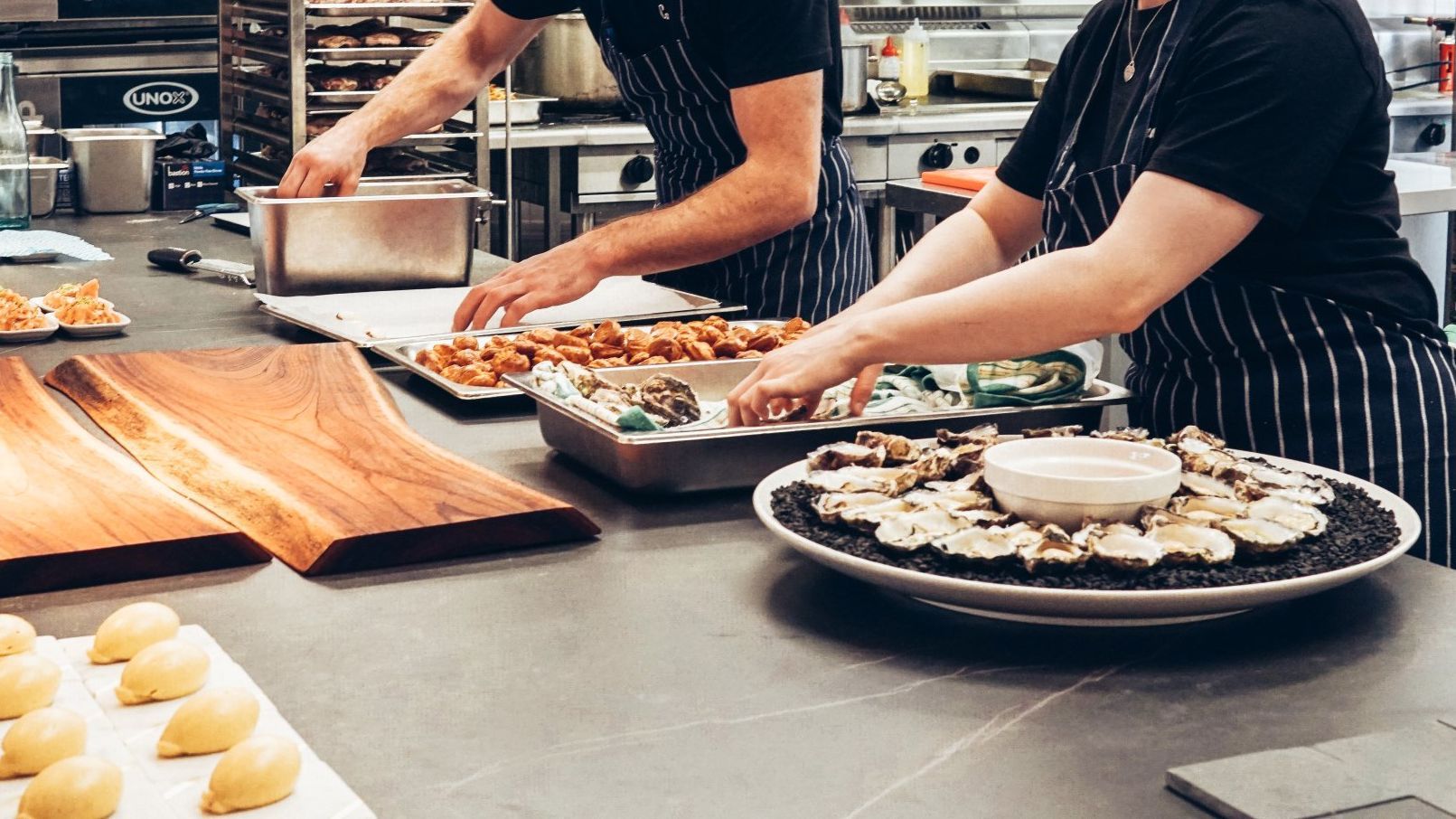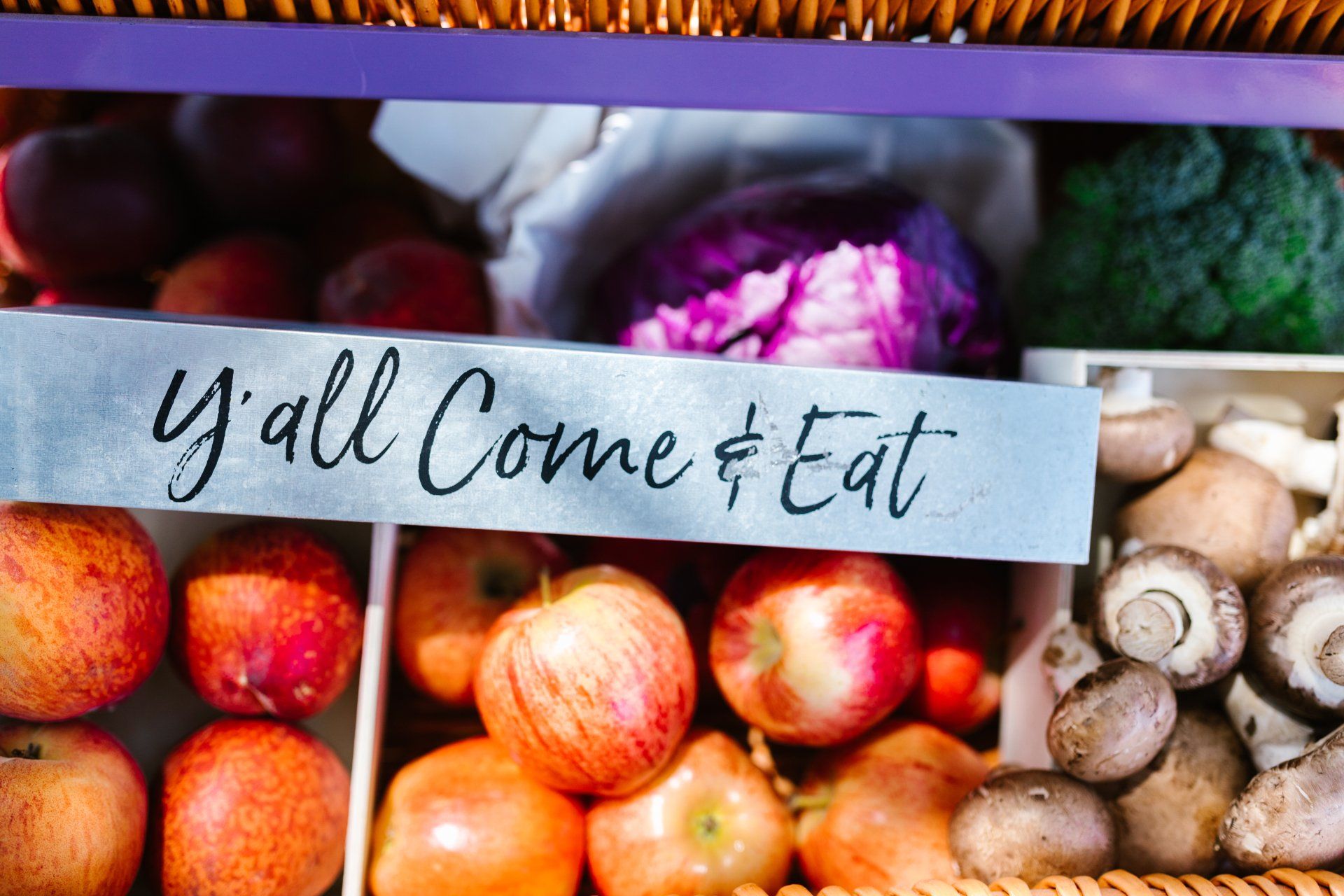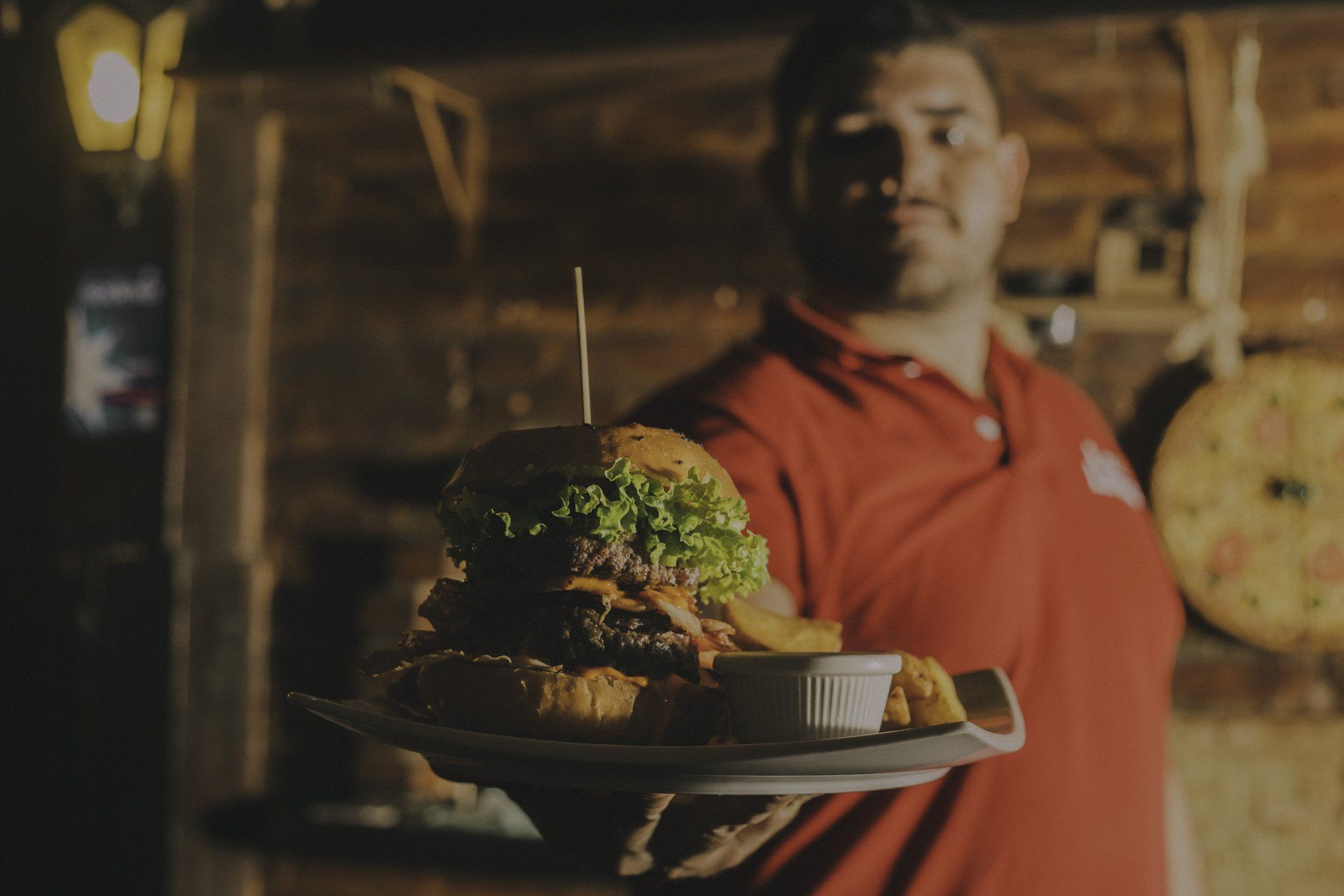Effective Social Media Strategies for Promoting Your Food Business in Hawaii: A Recipe for Success
July 8, 2023
Here's a recipe that really draws in new customers!
In today's digital age, social media has become a cornerstone for promoting businesses, and the food industry is no exception. As a food business owner in Hawaii, leveraging the power of social media is essential to reach a wider audience, engage with customers, and ultimately drive business growth. In this comprehensive blog post, we will explore effective social media strategies tailored specifically for food businesses in Hawaii. Whether you're a restaurant, food truck, or specialty food vendor, these strategies will help you elevate your social media presence, attract new customers, and create a thriving online community. As an added bonus, we offer consulting services designed to take your social media game to the next level.
Define Your Social Media Goals:
Before diving into social media, it's crucial to establish clear goals. Are you aiming to increase brand awareness, drive foot traffic to your physical location, boost online sales, or engage with the local community? Defining your objectives will shape your social media strategy and ensure that your efforts align with your business goals.
Know Your Target Audience:
Understanding your target audience is key to crafting effective social media content. Consider demographics such as age, location, and interests. In Hawaii, for example, you may be targeting tourists seeking authentic local experiences or health-conscious residents looking for sustainable dining options. Tailor your content to resonate with your audience and address their needs and desires.
Showcase Your Unique Hawaiian Flavors:
Hawaii's food culture is rich and diverse, so make sure to showcase the unique flavors that set your business apart. Highlight local ingredients, traditional dishes, and cultural influences through visually captivating images and videos. Let the vibrant colors and mouthwatering aromas jump off the screen, enticing followers to visit your establishment.
Engage with User-Generated Content:
Encourage customers to share their experiences by creating hashtags and running contests or giveaways. User-generated content adds authenticity and social proof to your brand. Repost and engage with customer content to foster a sense of community and build stronger relationships with your audience.
Collaborate with Influencers and Local Food Bloggers:
Partnering with influencers and local food bloggers can amplify your reach and expose your business to new audiences. Seek out influencers who align with your brand values and have an engaged following. They can help promote your food, create buzz, and generate valuable user-generated content.
Leverage Local Events and Festivals:
Hawaii is known for its vibrant food festivals and cultural events. Participate in these events and leverage social media to create pre-event buzz, share live updates, and post-event highlights. Engage with event hashtags and collaborate with other vendors to cross-promote each other's businesses.
Utilize Video Content:
Video content is a powerful tool to captivate your audience. Consider sharing behind-the-scenes footage, cooking tutorials, or chef interviews. Engaging videos not only showcase your culinary expertise but also offer an interactive and immersive experience that keeps followers coming back for more.
Engage with the Local Community:
Building a strong local presence is crucial for Hawaii food businesses. Engage with the local community by collaborating with other businesses, participating in charitable initiatives, and highlighting community events. This fosters goodwill and loyalty, driving customers to choose your business over competitors.
Respond to Feedback and Reviews:
Monitor social media platforms for customer feedback and reviews. Respond promptly, addressing both positive and negative comments professionally and empathetically. Show that you value customer opinions and are committed to providing exceptional service.
Track Metrics and Adjust Strategies:
Regularly analyze social media metrics such as engagement rates, reach, and conversions. Use these insights to refine your strategies and identify what resonates most with your audience. Experiment with different content formats, posting times, and hashtags to optimize your social media performance.
Social media has revolutionized the way food businesses in Hawaii can connect with customers, build brand awareness, and drive growth. By implementing these effective social media strategies tailored specifically to Hawaii's unique food culture, you can attract new customers, foster a loyal online community, and ultimately increase your business's success. If you're ready to take your social media presence to new heights, our consulting services are here to guide you every step of the way. Together, let's create a mouthwatering and impactful social media presence for your Hawaii food business.

By Karen Chang Barr
•
September 16, 2024
Many people start small businesses “accidentally,” by doing side gigs and become popular. When this happens, progress happens so quickly and can take on a life of its own without planning and organization. This can lead to disastrous consequences for some, which can lead to business failure. However, through thought and planning of how to run a growing business, it can evolve into a prosperous business. Setting the business up for success includes developing processes and procedures that can be a lifesaver. 1 An important step that does not get enough attention is analyzing whether or not a potential business idea solves a problem and planning for new business success. Although you may think your business idea is great, it could become a financial black hole to keep it going if you don’t understand your target market–who actually needs your product or service. 2 Another is understanding business finances and developing a business plan. This can be overwhelming, especially if you don’t have a business or financial background. The good news is this hurdle can be overcome by taking business training, creating business planning and projection documents, and finding a mentor to guide you through the startup process. 3 When planning and making financial projections, it’s important to establish good financial best practices to really understand your costs. One key activity is to open a business bank account. This is to help to keep your business and personal finances separate to and track true costs of your income and expenses. 4 If you sell food and accept both cash and digital payments, it’s important to deposit all cash receipts into your business bank account immediately following your popup, farmers market, food truck or festival events. This helps ensure you are accurately capturing your sales revenue. Many entrepreneurs handling cash make the mistake of dipping into the cash box to pay for personal items, which leads to errors in their financial records. 5 Always use your business debit or credit card for all purchases for the business. The goal is to have both revenue and expenses recorded in your bank account, which helps to manage your finances. 6 Use an online financial accounting software to track all transactions and easily generate reports about the business. Many software options offer mobile apps for business customers to access their financial information anywhere. These programs can directly connect with business bank accounts and can transfer the bank records to the software to show up-to-date financial information about the business. 7 Save your business transaction receipts, especially when cash is used to make business purchases. These transactions will be needed to add to the accounting software, either through the app, or through manual entry. 8 Another tip for managing business finances is to create a main business bank account for revenue and set up accounts to serve for specific purposes. You can make it part of your regular process to transfer predetermined percentages to these accounts. This helps to avoid overspending what’s in the main account and encounter shortfalls when it’s time to pay expenses. It also allows you to designate profit for yourself. It may take some time to start “paying yourself profit,” by diligently tracking your business finances, you can make this happen. Some recommended categories are: Profit Operations Taxes By being organized and creating best practices and procedures, small business entrepreneurs can keep better track of their finances and be prepared to pay important expenses. Not only is this a critical part of running a small business, but also minimizes the stress from scrambling at the last minute to understand the finances, pay important bills, and run a successful business that can grow and flourish.

By Ritchel Escalona
•
May 22, 2024
What are Customer Relationships? Customer relationships describe the interactions a business has with its customers or clients and are crucial whether you’re a microenterprise, corporate entity, or government organization. These interactions involve how you acquire customers (inbound), retain them, encourage them to purchase more products or services (upsell), and keep them informed about additional value your organization offers (outbound). According to the Business Model Generation, customer relationships are the connections a business establishes with different customer segments. These relationships can be personal or automated, short-term or long-lasting, and can even evolve into a micro community. Why are Customer Relationships Important? Customer relationships are crucial because they influence the customer journey and can significantly impact the cycle of repeat business. When customers feel valued and heard, their satisfaction increases, enhancing the likelihood of continued business and positive referrals to new customers. How to Determine Your Customer Relationship Strategy By understanding customer segments, your desire to serve is significant to shaping the customer relationship experience. For instance, if your goal is to be highly automated with minimal human interaction, you will attract customers who prefer a hassle-free transaction for their products. On the other hand, if your goal is to build strong relationships with each customer, consider in-person interactions and regular touchpoints through newsletters, community events, or other personal communication methods. Regardless of the type of relationships you choose to establish with your customers, it’s essential to understand the business process, identify your target audience, and decide on the nature of your interactions. The customer experience plays a critical role in shaping how customers engage with your business and will pave the way for your business's future success.

By Ritchel Escalona
•
April 24, 2024
Are you looking to attract more customers and grow your street or mobile food business in Hawai`i? Understanding the different communication channels and identifying and using the right ones to connect with specific customer demographics can significantly boost your brand, enhance your customer base, and strengthen your foodie community. The Entrepreneurial Spark Many street food entrepreneurs begin their journey organically and unexpectedly. You might have catered to a large gathering and received glowing reviews or participated in a festival where your food idea was a hit. Whatever your inspiration, it's crucial to leverage that initial success into a sustainable business. Assessing the validity of your business idea and creating a business model canvas (1-page business plan) will help map your success. One important element is identifying the channels you’ll use to communicate your brand and interact with your customers. Mastering Communication Effective communication with your audience is essential, not just for sharing your daily menu but for building lasting relationships. Your customers need opportunities to interact with you, whether to praise your dishes, inquire more about your offerings, or provide feedback. Key Communication Methods Understanding and utilizing various communication methods will help you effectively reach and engage your audience: 1. Verbal Communication : This can be direct conversations at your food cart or through digital means like phone calls and virtual meetings. Such interactions create a personal touch that can differentiate your business. 2. Written Communication : Keep your customers informed and engaged through texts, emails, social media posts, and even traditional methods like flyers and postcards. These tools are vital for announcing your location, specials, or changes in service hours. 3. Nonverbal Communication : The way you present yourself and interact with customers can speak volumes. Body language, eye contact, and even the setup of your stall contribute to how customers perceive your business. These cues, though subtle, are powerful in person or through video. Choosing the Right Channels Selecting appropriate communication channels is crucial. Different customers may prefer different types of interactions. For instance, younger customers might engage more with social media updates, while others may value face-to-face communication. Listening to customer feedback is key—it can inspire new dishes and help refine your approach. Engaging to Grow Communication should be a two-way street. It's not just about selling; it's about engaging in a manner that encourages customers to participate in your business's growth. This could mean involving them in menu decisions or making them feel like part of your brand's community. Conclusion For street and mobile food vendors, especially in a diverse place like Hawai`i, understanding how to communicate effectively is more than a necessity—it's a strategy for growth. By choosing the right channels and fostering genuine interactions, you can turn casual eaters into loyal customers and active promoters of your business.

By Chris Wall
•
January 3, 2024
Discover the importance of strong supplier relationships for Hawaii food businesses. This comprehensive article explores the benefits, strategies, and tips for building and maintaining successful partnerships with suppliers. Reach out to our Hawaii food business consulting company for expert guidance in establishing strong supplier relationships that will enhance your business's success.

By Karen Chang Barr
•
January 2, 2024
Embarking on the journey of starting a food business is definitely thrilling, especially when your passion for a particular culinary concept is the main focus in your day-to-day thoughts. I often refer to it as the "Lala land stage" (where all you can think of is the fairy tale version of starting your business where no challenges exist), envisioning the success of your venture seems effortless. Whether it's the nostalgic flavors of your ethnic cuisine, a beloved dessert, or the dream of operating a bustling food truck, the key to a thriving food business lies in careful planning and realistic cost projections. Having collaborated with a number of commercial kitchen food trucks and other mobile food businesses clients, I've observed a common pitfall: overspending (and getting into personal financial debt) due to a lack of understanding about costs and separating personal from business finances. Many entrepreneurs find themselves grappling with the financial strain of extensive menus without a clear comprehension of the associated expenses. This leads to challenges such as insufficiently pricing items to cover production costs and lacking a profitable margin. Here are crucial considerations when launching your small food business: Startup Costs: Determine the initial investment required to launch your business. Monthly Operating Costs : Identify recurring expenses your business will incur Projected Monthly Revenue: Estimate your expected income. Compliance and Tax Costs: Factor in costs related to regulatory compliance and taxes Available Startup Capital: Assess the funds you have at your disposal. Additional Funding Needs: Determine how much extra capital you’ll require. Break-Even Analysis: Calculate the sales needed to cover the costs and break even. Developing a startup cost projection worksheet aid in understanding the financial landscape of your venture will be beneficial. It provides insights into the costs, your financial contribution, and additional funding requirements. Equally important is creating a 12-month or 2-year monthly projection of revenue and expenses. This serves as a roadmap, indicating the volume of sales needed to cover expenses and achieve profitability. While these documents are initially estimates, they form a foundation for understanding your business's financial dynamics. Over time, you'll refine your projections based on real-world outcomes. Pay particular attention to determining the cost of production for each menu item and be sure to include overhead. This knowledge enables you to price products effectively, covering expenses and generating profit. Consider starting with a limited menu to gauge customer preferences before expanding. Regularly review and adjust your projections based on performance, enhancing efficiency and fostering the successful growth of your small food business. Understanding costs, making informed financial predictions, and adapting to market dynamics

December 1, 2023
Discover how online reviews can be a game-changer for your Hawaii food business. This exciting article explores the impact of positive reviews, strategies to generate more reviews, and how our consulting services can help you leverage the power of online feedback to grow your business and attract new customers.

November 1, 2023
Craft an irresistible menu for your food business in Hawaii with these expert tips. From incorporating local flavors to balancing variety and simplicity, this blog post offers valuable insights to attract customers and maximize your business's success. Discover how our food business consulting service can help you create a menu that stands out in Hawaii's culinary landscape.
Office
808-809-4BIZ (4249)
Email us
Subscribe to our newsletter
Contact Us
Thank you for contacting us.
We will get back to you as soon as possible.
We will get back to you as soon as possible.
Oops, there was an error sending your message.
Please try again later.
Please try again later.
© 2025
All Rights Reserved | Ho‘onui LLC
Hawaii Food industry Web & Marketing Services Provided by Strafford Media




